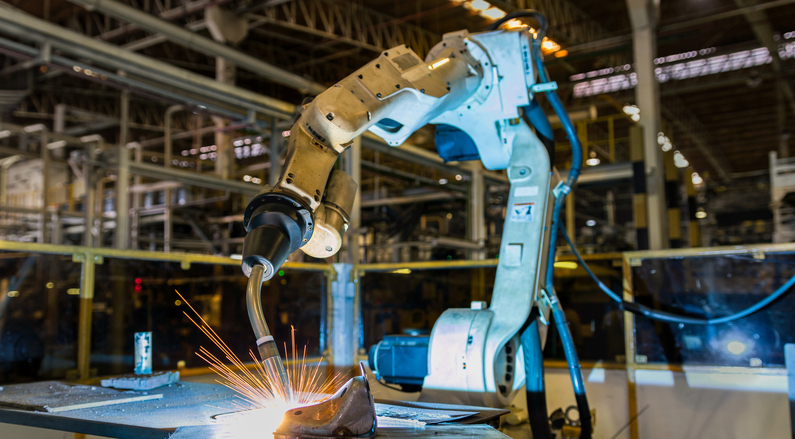In the world of industrial robotics, the end-effector, often referred to as the end-of-arm tooling (EOAT), is one of the most crucial components. While manufacturers design the robotic arm itself to perform general tasks, it's the addition of an end-effector that truly transforms the robot into a specialized solution tailored to specific applications. An end-effector is essentially the "hand" of the robot, enabling it to interact with objects in its environment. Whether it's gripping, welding, painting, or any other task, the right end-effector is what makes all the difference. The type of end-effector selected can dramatically impact how efficiently and effectively a robot performs its assigned duties. From assembly lines to complex manufacturing processes, the choice of end-effector plays a pivotal role in determining whether a robotic system operates at peak productivity or struggles to meet expectations. A poorly chosen end-effector can lead to frequent downtime, increased operational costs, and even damage to the robot itself. Selecting the ideal end-effector requires careful consideration of several key factors. Typically, this decision-making process is handled by experienced robotic systems integrators who understand both the technical aspects of robotics and the unique demands of various industries. These experts take into account variables such as payload capacity, working pressure, speed requirements, tooling dimensions, environmental constraints, and financial limitations. For instance, when dealing with material handling tasks, the size and weight of the items being handled play a decisive role in determining whether mechanical grippers or vacuum clamping mechanisms would be more suitable. Similarly, in environments where robots need to extend their reach significantly, the weight of the end-effector becomes particularly important since excessive weight could hinder movement precision and speed. Quick-change tooling devices also offer flexibility by allowing robots to switch between different end-effectors mid-cycle depending on the task at hand. Ultimately, finding the optimal end-effector involves balancing multiple considerations to ensure maximum productivity while minimizing costs. It’s not just about picking any tool—it’s about selecting one that aligns perfectly with the intended application so that the entire robotic system operates smoothly without compromise. Making the right choice regarding end-effectors isn't merely optional; it's essential for achieving successful outcomes across various industrial sectors. Using an inappropriate end-effector can result in severe disruptions within production workflows due to prolonged periods of idleness caused either directly by malfunctioning tools or indirectly through suboptimal performance levels. Such inefficiencies can severely affect profitability over time as delays accumulate and maintenance expenses rise.
On the flip side, equipping robots with appropriately matched end-effectors leads to smoother operations, faster cycle times, enhanced reliability, and ultimately better returns on investment (ROI). When properly configured, these systems contribute significantly towards streamlining processes thereby reducing human intervention needs while maintaining high standards of quality control throughout each stage of production.
It's worth noting though that selecting appropriate end-effectors goes beyond mere functionality—they must also adhere strictly to safety guidelines set forth by regulatory bodies ensuring compliance while protecting workers' health simultaneously. Additionally, they should be designed considering future scalability options allowing businesses to adapt easily whenever technological advancements occur or new methods emerge requiring modifications.
To sum up, investing wisely in choosing the correct end-effector ensures long-term benefits including improved efficiency, reduced maintenance issues, increased flexibility, and ultimately greater competitiveness among peers operating within similar fields. If you're looking forward to optimizing your current setup or planning upgrades soon consider reaching out professionals specializing specifically in customizing solutions tailored exactly according to your business needs today!
Posted in Robotics & Automation
ISUZU Connecting Rod has the characteristics of high strength, light weight, fatigue resistance, precision machining and high wear resistance, and is suitable for engines under various working conditions.
Our company insists on market- oriented and has constantly pushed a series of new products to meet the demand of market,and the new products we created have accumulated to over 400pcs by so far. Our manufacturing facilities practice state of the art process control and all are certified to IATF16949:2016 international quality standards. Also ,we have won the title of Anhui High-Tech Enterprise and Advanced Private Technology Company.etc. In 2007, the company, as OEM which has cooperated with J.K international group (U.S.A) and First Auto Work(CHINA) . Our local sales are designed to provide exceptional customer support,competitive pricing and marketing assistance to our OEM and aftermarket customer. Isuzu Connecting Rod,Carbon Fiber Connecting Rods,Piston And Connecting Rod,Forged Connecting Rods Wuhu Hangtian Automobile Connecting Rod Co., Ltd , https://www.htconrod.comThe Crucial Role of the Right Robotic End-Effector in Enhancing Performance

Deciding on the Perfect End-Effector
Why Does Choosing the Right End-Effector Matter So Much?